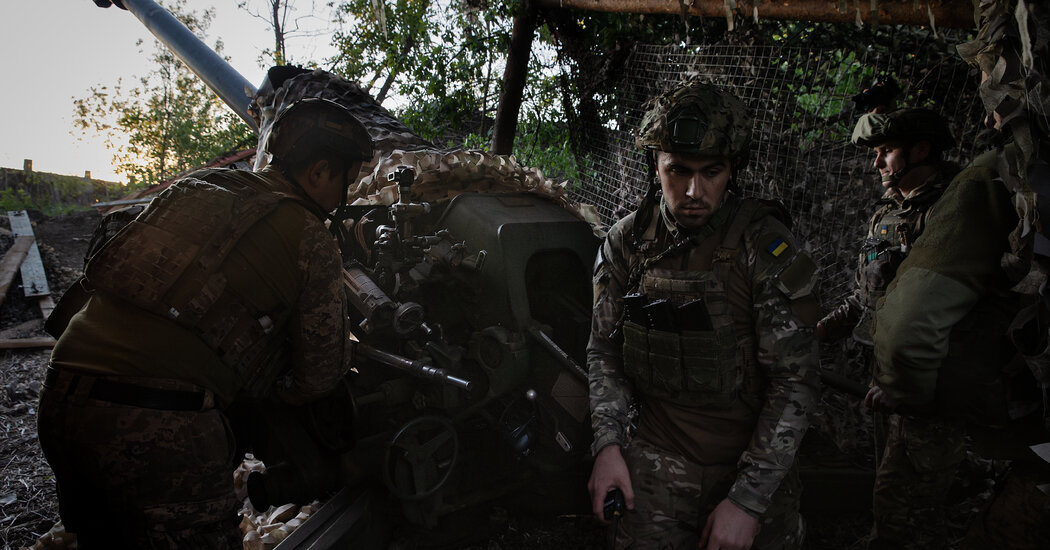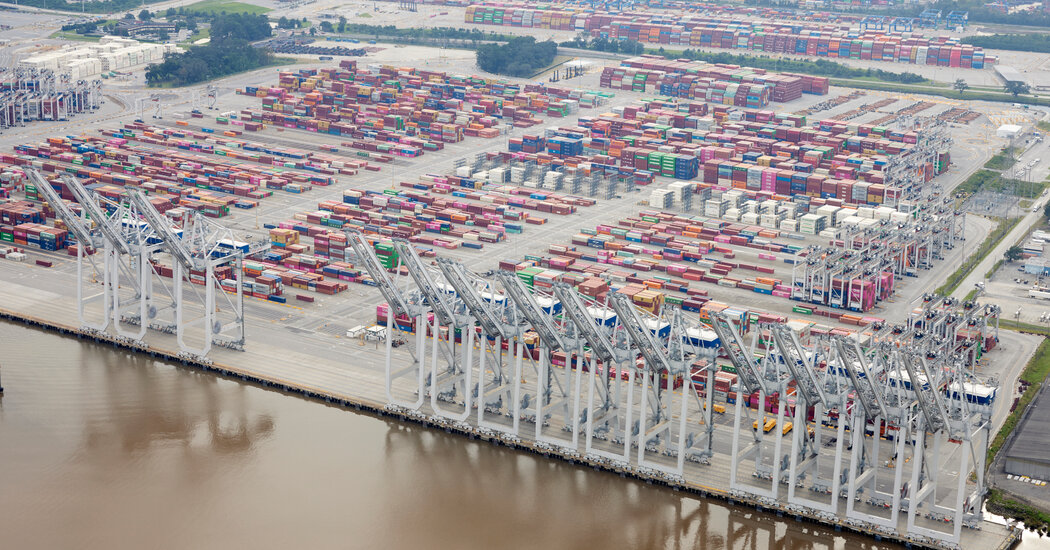May 24, 2024 | by Kaju

France and Germany’s current agreement to develop a brand new multibillion-dollar battlefield tank collectively was instantly hailed by the German protection minister, Boris Pistorius, as a “breakthrough” achievement.
“It’s a historic second,” he stated.
His gushing was comprehensible. For seven years, political infighting, industrial rivalry and neglect had pooled like molasses across the challenge to construct a next-generation tank, often known as the Principal Fight Floor System.
Russia’s invasion of Ukraine greater than two years in the past jolted Europe out of complacency about navy spending. After protection budgets had been reduce within the many years that adopted the Soviet Union’s collapse, the struggle has reignited Europe’s efforts to construct up its personal navy manufacturing capability and near-empty arsenals.
However the challenges that face Europe are about extra than simply cash. Daunting political and logistical hurdles stand in the best way of a extra coordinated and environment friendly navy machine. They usually threaten to noticeably hobble any fast strengthening of Europe’s protection capabilities — whilst tensions between Russia and its neighbors ratchet up.
“Europe has 27 navy industrial complexes, not only one,” stated Max Bergmann, a program director on the Heart for Strategic and Worldwide Research in Washington.
The North Atlantic Treaty Group, which can have a good time its seventy fifth anniversary in Washington this summer season, nonetheless units the general protection technique and spending objectives for Europe, however it doesn’t management the gear procurement course of. Every NATO member has its personal protection institution, tradition, priorities and favored firms, and every authorities retains last say on what to purchase.
“Even once they purchase the identical German tank, they construct it in numerous methods so a nationwide protection firm can get a bit of it,” Mr. Bergmann stated.
That was what hampered the event of the German-French “tank of the longer term,” which can be operational — with drones, missiles, cloud computing and extra — by 2035 or 2040, the nations hope. Disputes even prolonged as to if the tank’s fundamental gun ought to be 130 millimeters, favored by the Germans, or a 140-millimeter model developed by the French.
The disjointed protection market makes it troublesome for Europe as an entire to streamline prices and be certain that gear, elements and ammunition are interchangeable throughout nationwide borders.
There are additionally competing political visions.
“Europe must do a greater job of defending ourselves, that’s the undisputed reality,” stated Michael Schoellhorn, the chief govt of Airbus, the European aerospace big that makes navy plane. “Now what does that imply and with what ambition?”
France and Germany, the European Union’s two largest economies, have the 2 largest protection budgets among the many member states and can spend a mixed 120 billion euros this yr. But they stand on reverse sides of the talk.
France, which has its personal nuclear arsenal, has pushed the toughest for Europe to put money into a stronger and extra self-sufficient navy. President Emmanuel Macron has repeatedly referred to as for “European sovereignty” and “strategic autonomy” to steadiness the USA’ domination of NATO. And he has loudly voiced the deep anxieties that many European governments have about being overly depending on the USA for safety.
Germany, which lacks its personal nuclear weapons and depends on NATO’s arsenal, is extra comfy with Europe’s unequal partnership with the USA.
The vigorous pacifist pressure that adopted World Battle II stays deeply embedded in German tradition, and the general public is just beginning to come round to the concept a navy can be utilized to defend a democracy with out undermining it.
At present, the trouble to fill Europe’s depleted arsenal is going on at two speeds: Nations together with Poland and Germany are shopping for fighter jets, missiles and ammunition from the USA and Asian allies, and France is urgent for the acceleration of a “Made in Europe” protection business to extend self-sufficiency.
The divergent approaches will be seen in a few of the responses to the European Sky Defend, a German initiative to construct an built-in air-and-missile protection system throughout Europe that has rallied backing from at the very least 20 NATO nations. Paris seen this system, which depends on gear made in Israel and the USA, as excluding the European industrial base. Berlin portrayed the trouble as an distinctive present of European unity.
“Berlin mainly says this struggle exhibits that the E.U. doesn’t have the commercial capacities to guard itself and due to this fact we have to ‘purchase American’ massively,” stated Alexandra de Hoop Scheffer, the senior vice chairman for technique on the German Marshall Fund. “And the French say this struggle exhibits that we have to step up our European protection industrial capabilities.”
France, Spain and Italy, in addition to Sweden, which grew to become the latest member of NATO this yr, have argued that European funding ought to be used to put money into European navy gear manufacturing traces, make provide chains extra resilient and generate uncooked supplies and parts as a substitute of importing them.
The European Fee issued an analogous message in March when it revealed a European Defense Industrial Strategy that aimed to bolster Europe’s navy industrial base. The plan, the primary of its variety for Europe, would hyperlink a whole bunch of billions of euros in subsidies to necessities that European weapons makers from completely different nations work collectively.
“Member states want to speculate extra, higher, collectively and European,” the fee stated.
Over the previous two years, 78 percent of the protection gear acquired by E.U. members was purchased from exterior the bloc — largely from American arms makers which have little interest in harder competitors from Europe. The European Union’s new industrial strategy asks nations to spend half of their protection budgets on E.U. suppliers by 2030, and 60 % by 2035.
Poland, on Ukraine’s western border, is spending greater than 4 % of its gross home product on protection. It has bought a whole bunch of tanks, battle planes, helicopters, rocket launchers and howitzers from the USA and South Korea, together with British-designed frigates. Central and East European nations are additionally shopping for American.
Micael Johansson, the chief govt of the Swedish weapons producer Saab, stated the European Union’s technique “factors in the correct course.”
“However if you wish to have business investing billions of euros,” he stated, European leaders should make long-term commitments to purchase what the businesses produce.
Then there may be the query of the way to pay for all of it. The European Union’s treaty forbids member states to make use of the bloc’s funds for arms purchases — such spending should be performed out of nationwide budgets.
France is amongst a number of nations which have racked up huge money owed within the wake of the pandemic.
Most governments, together with Germany’s, have to date opposed a proposal backed by Estonia and France to situation European protection bonds.
The Netherlands, Finland and Denmark are additionally cautious of permitting the European Fee to achieve extra energy by influencing protection contracts with subsidies.
And there may be concern that Britain, which spends extra on protection than some other NATO nation within the area, can be excluded from the European Union’s navy buildup by members-only preferences.
If Europe’s protection business is to outlive, some smaller weapons makers are going to need to merge or shut, stated Kurt Braatz, the chief communications officer for KNDS, a French and German conglomerate that was chosen to assist develop the next-generation battle tank.
With a patchwork of protection firms that hardly ever collaborate, Europe operates more than five times as many weapons techniques as the USA does in classes like tanks, fighter jets, submarines and munitions. The business can not compete in such a fractured state with American weapons behemoths like Boeing, Lockheed Martin and Basic Dynamics, Mr. Braatz stated. “Consolidation is actually wanted.”
Solely a big operation can create the mandatory economies of scale and produce sufficient arms for export to make the business worthwhile.
Such discuss has stirred discomfort in European capitals. “If you begin speaking about mergers, you’re speaking about closing firms in some nations and shedding jobs,” stated Gaspard Schnitzler, the pinnacle of the protection and safety business program on the French Institute for Worldwide and Strategic Affairs. “And nobody desires to lose jobs.”
Melissa Eddy contributed reporting.
RELATED POSTS
View all


